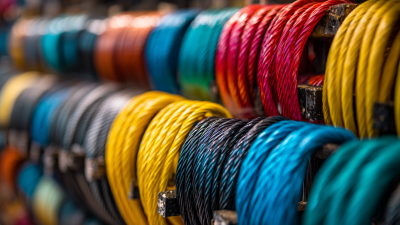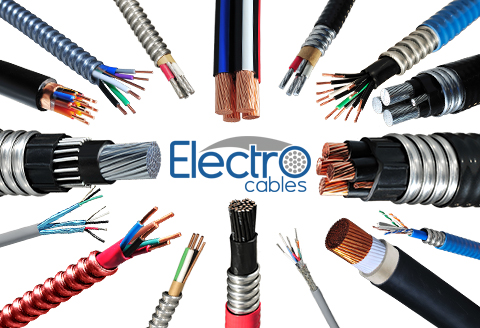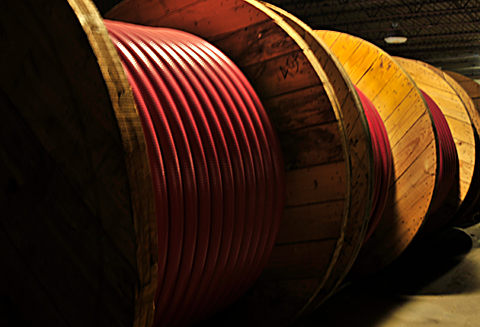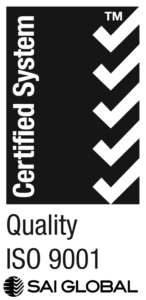A partner you can trust
Understanding the Benefits of Metal Clad Cable for Modern Electrical Installations
In the ever-evolving landscape of electrical installations, the choice of wiring plays a pivotal role in ensuring safety, efficiency, and reliability. One such innovative solution gaining prominence is metal clad cable. This type of cable, characterized by its robust metal sheath, not only provides enhanced protection against physical damage but also offers superior resistance to environmental factors such as moisture and chemicals.

As modern infrastructure becomes more complex and the demand for durable electrical systems escalates, understanding the benefits of metal clad cable is essential for both professionals and consumers alike. From commercial buildings to industrial applications, the use of metal clad cable is revolutionizing the way we approach electrical installations, making it a crucial topic for anyone looking to optimize their wiring choices.
Benefits of Metal Clad Cable in Reducing Electrical Hazards in Modern Installations
Metal clad cables are increasingly recognized for their critical role in enhancing safety in modern electrical installations. With the armored and metal-clad cables market projected to achieve a 3.7% compound annual growth rate (CAGR), reaching an estimated USD 5 billion by 2035, the demand for these robust solutions is on the rise. These cables are engineered to provide secure, durable, and high-performance power transmission, making them ideal for industrial and commercial environments where electrical hazards pose significant risks.
The design of metal clad cables offers superior protection against physical damage, moisture, and environmental factors, effectively reducing the likelihood of electrical failures. This durability not only mitigates potential hazards but also prolongs the lifespan of electrical systems. A report from industry experts highlights that the use of armored cables can decrease maintenance costs and enhance overall operational efficiency, underscoring their importance in modern electrical infrastructure. As industries continue to prioritize safety and reliability, metal clad cables emerge as a vital component in safeguarding both personnel and equipment from electrical hazards.

Understanding the Enhanced Durability of Metal Clad Cable in Challenging Environments
Metal clad cable (MC cable) is increasingly recognized for its enhanced durability, particularly in challenging environments. According to a report from the National Electrical Manufacturers Association (NEMA), the unique armored construction of MC cables significantly impacts their resistance to physical damage, moisture, and various environmental factors. This durability makes them an ideal choice for industrial and commercial applications, where exposure to harsh conditions is common. In fact, industry studies show that installations using MC cable experience a 30% reduction in damage-related costs compared to traditional wiring methods.
Moreover, the metal sheath of MC cables provides added protection against electromagnetic interference (EMI), which can compromise the integrity of electrical systems. The Institute of Electrical and Electronics Engineers (IEEE) highlights that using MC cables can help maintain signal clarity and reduce downtime in critical applications such as manufacturing plants and data centers. As more businesses seek reliable power solutions that can withstand the rigors of their operational environments, incorporating metal clad cable into electrical installations emerges as a forward-thinking strategy, underscoring the value of investing in robust electrical infrastructure.
Cost-Effectiveness of Metal Clad Cable Compared to Traditional Wiring Solutions
Metal clad cable is gaining traction as a cost-effective solution for modern electrical installations, particularly when compared to traditional wiring systems. One substantial advantage is its ability to provide improved durability and safety, reducing the risk of electrical failures. The increased use of metal clad cable also aligns with the growing focus on renewable energy and sustainable construction practices. By utilizing such innovative materials, builders and electricians can contribute to more energy-efficient infrastructures.
Furthermore, the acceptance of copper-clad aluminum (CCA) building wire is becoming increasingly prominent, reflecting a shift in industry standards. Projects incorporating CCA can leverage its lightweight characteristics while still achieving reliable performance and long-lasting results. This growing reliance on advanced materials like CCA not only signifies a transition toward economically viable options but also highlights the industry’s commitment to sustainability, as these materials often exhibit lower environmental impacts compared to conventional copper solutions.
Cost-Effectiveness of Metal Clad Cable Compared to Traditional Wiring Solutions
Key Industry Standards Supporting the Use of Metal Clad Cable in Electrical Systems
Metal clad cable (MC cable) is increasingly favored in modern electrical installations due to its robust construction and compliance with critical industry standards. The National Electrical Code (NEC) in the United States provides guidelines that promote the safe use of MC cable in various applications. These standards dictate installation practices, ensuring that the cable can withstand environmental challenges, such as moisture and mechanical impacts, which are common in industrial and commercial settings.

Moreover, Underwriters Laboratories (UL) certification is another significant standard supporting the use of metal clad cable. UL testing ensures that MC cables meet stringent safety and performance criteria, giving electrical professionals confidence in their reliability. The resistance of metal clad cable to fire and its ability to provide grounding are crucial benefits recognized by these industry standards, making it a preferred choice for both new and retrofit projects across diverse environments.
As regulations continue to evolve, the adoption of metal clad cable is positioned to grow, reflecting its essential role in maintaining electrical safety and efficiency.
Improving Energy Efficiency with Metal Clad Cable: A Comprehensive Overview
Metal clad cable (MCC) offers significant improvements in energy efficiency for modern electrical installations, addressing the increasing demand for sustainable solutions in energy consumption. The design of MCC ensures minimal energy loss due to its robust protective layers, which effectively reduce resistive heating and enhance overall operational performance. According to industry reports, the use of metal clad cable can lead to a reduction in energy losses by up to 30%, translating into considerable savings for both residential and commercial installations.
In the context of evolving technologies, such as the advancements seen in 3D-printed buildings, it is essential to adopt efficient cabling systems that align with sustainable construction practices. Just as optimizing thermal efficiency is critical for 3D printing techniques, utilizing MCC can ensure that electrical systems remain energy-efficient. The combination of high thermal performance and durability in MCC contributes to maintaining energy balance within buildings.
Tips: When considering metal clad cable for your next project, ensure that it meets specific standards for energy efficiency, and consult with suppliers about the latest data on performance metrics. Additionally, always account for installation practices that complement the benefits of MCC to maximize energy savings.
Related Posts
-

5 Essential Tips for Choosing the Right Metal Clad Cable for Your Project
-

How to Choose the Right Electric Cable for Your Global Procurement Needs
-

Essential Guide to Understanding Twin and Earth Cable Specifications and Applications
-

Understanding the Benefits of Using Flexible Cable Conduit in Your Projects
-

Comprehensive Guide to Selecting the Best Flexible Cable Conduit for Your Project
-

Innovative Uses of Electric Cable Wire in Modern Technology

Products
Products
LEARN MORE
Current Inventory
Current Inventory
LEARN MORE
Custom Solutions
Custom Solutions
WE CAN HELPLighting Power & Control-Signal Cable
This content is restricted to site members. If you are an existing user, please log in. New users may register … LEARN MORE “Lighting Power & Control-Signal Cable”
LOOKING
FOR HELP?
We are here to help. You can contact us or create an account online to have access to special products, technical specifications and our new online quote tool.
ELECTRO CABLES
9 Riverside Drive
P.O. Box 276
Trenton, Ontario
CANADA K8V 5R5
N.A. Toll Free: 888-ELECTRO
(1-888-353-2876)
World: 613-394-4896
Fax: 613-394-4101
Email: sale@machinecables.com
We manufacture cables that are certified by the Canadian Standards Association (CSA), listed by Underwriters Laboratories and/or listed by Intertek (ETL).
Our quality management system is registered to ISO 9001: 2015. Our team is dedicated to consistently providing quality service and products to our customers.

© 2025 ELECTRO CABLES • SITE BY SNAP 360•
